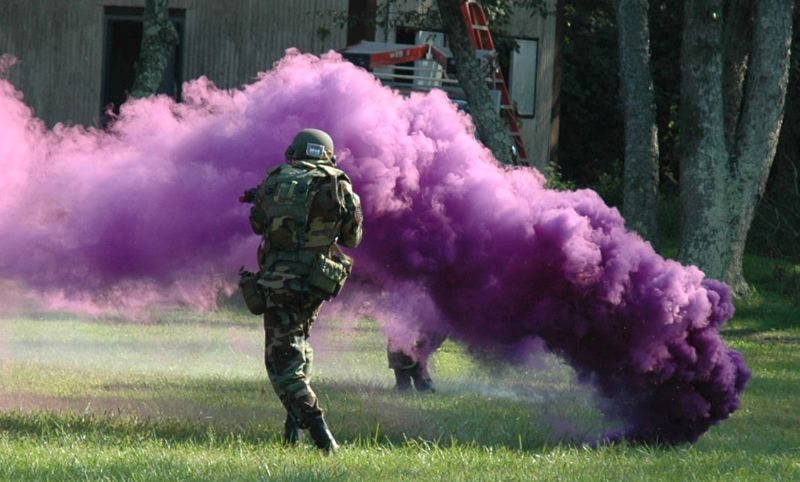Pine Bluff Arsenal’s Directorate of Ammunition Operations here achieved a major quality milestone July 2, when it produced its three millionth M18 colored smoke grenade without a failure.
The directorate passed the two million mark in May 2011.
“This is a major accomplishment. I can’t take credit for it,” said Roch Byrne, AO director. “The men and women who do the hard work every day, put the coveralls on, load up the buses early in the morning and work on the production lines are awesome. They have tough jobs. They really do great work.”
The success of the grenade program in recent years has come from the addition of a starter patch, which is produced at Pine Bluff Arsenal, which greatly improved burn times. The patch, which looks like a wafer and sits between each doughnut-shaped starter slug, allows for a different ignition method. The fuse ignites the patch and puts the fire between the layers, thus pushing the smoke mix faster. The introduction of the patch greatly increased start times with the grenades, and decreased the lag time. The starter patch was first used in December 2006.
“That is the vehicle that allowed for the three million grenades to be produced. Without the hard work and dedication to details and quality by the men and women who work for production, this wouldn’t have happened,” said Byrne. “It is a remarkable achievement.”
The folks here at Pine Bluff Arsenal know how to make quality grenades, he said. “If we have all the components we need, we will make a good grenade that is the bottom line,” said Byrne in a previous article. “This really shows we know what we are doing and we have the people to do it.”
Byrne said that he received a note from Retired Col. Brian Lindamood, former Arsenal commander, back in 2011, congratulating the Arsenal on passing the two million mark.
“Col. Lindamood knew the challenges we faced with the program,” said Byrne. “He also knew Team AO was committed to fixing the problems. I think he will be thrilled to learn of the three million milestone.”
In addition to the grenade production milestone, full material release for the M1123 and M1124 155mm illumination projectiles was signed by Brig. Gen. Kristen French, June 30. These projectiles are similar to the 155mm M1066 infrared and M485A2 visible light illuminating projectiles previously built by Pine Bluff Arsenal, but have a reduced cost and an extended range of five kilometers. Approximately 20,000 combined projectiles are expected to be produced.
Byrne said that getting this release completes a 30-month effort to demonstrate the arsenal’s capability to produce and field two lower cost-extended range munitions.
“It was a combined effort with a lot of different parties involved including us, the Project Manager for Combat Ammunition Systems, Crane Army Ammunition Activity, the Joint Munitions Command, and others,” he said.
Sal Ghazi, Smoke and Illuminating Projectiles/Mortars branch chief, with Project Manager for Combat Ammunition Systems, said via email he wanted to personally thank everyone for their efforts on the success of the M1123/M1124 program.
“The program was a complete success. Please pass on my gratitude to each of your team,” he said.











